Long duration M2.4 solar flare erupts from Region 2282, full halo CME produced
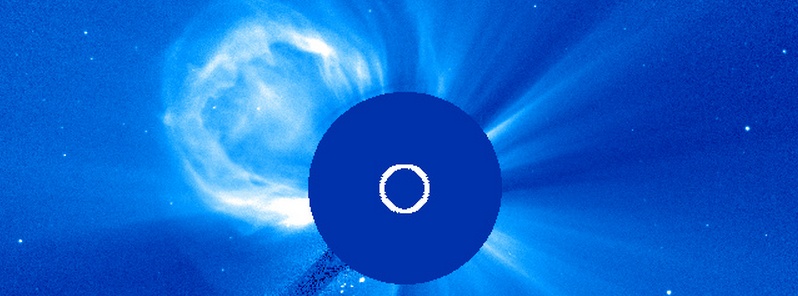
A moderately strong, long duration solar flare measuring M2.4 at its peak time erupted from Region 2282 ('beta') late on February 9, 2015. The event started at 22:19, peaked at 23:35 and ended at 00:16 on February 10.
This flare had associated Type II (estimated velocity of 1 190 km/s) and Type IV radio sweeps.
Type II emissions occur in association with eruptions on the Sun and typically indicate a Coronal Mass Ejection (CME) is associated with a flare event. Type IV emissions occur in association with major eruptions on the Sun and are typically associated with strong CMEs and solar radiation storms.
The bulk of the material was directed northeast, however the shock produced by the eruption formed a full halo.
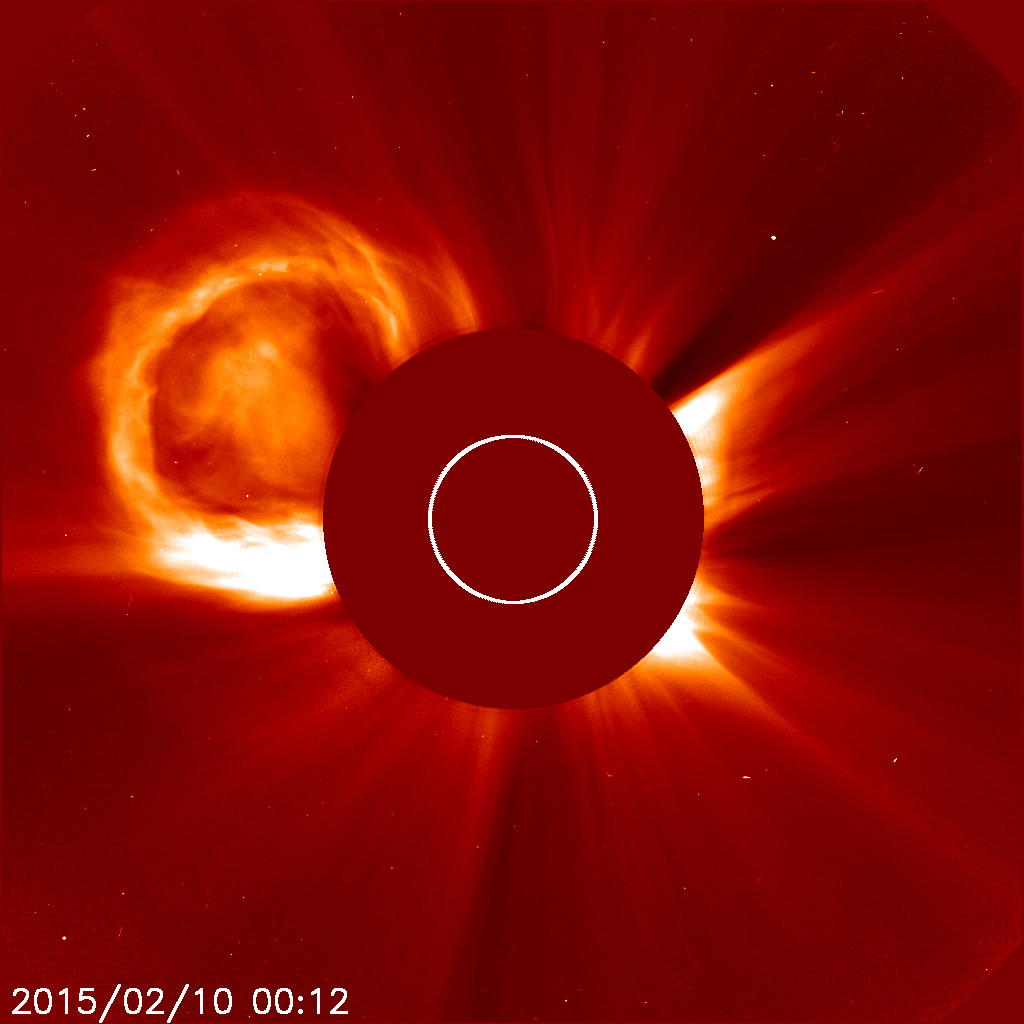
Full halo CME visible on LASCO C2 image. Credit: ESA/NASA
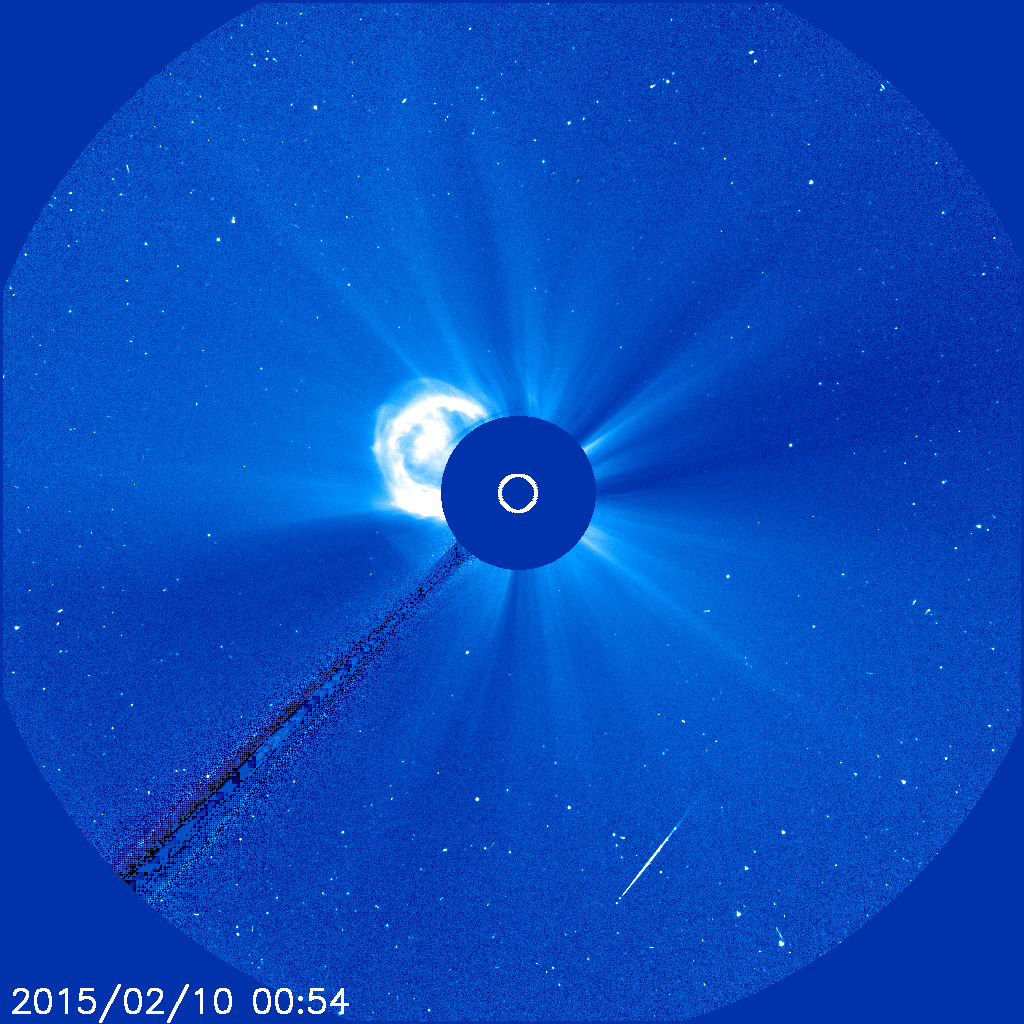
Full halo CME visible on LASCO C3 image. Credit: ESA/NASA
A model analysis is in progress now that imagery filled in to determine if there is enough of an Earthbound component to generate activity.
Earth-directed CMEs are possible in the days ahead.


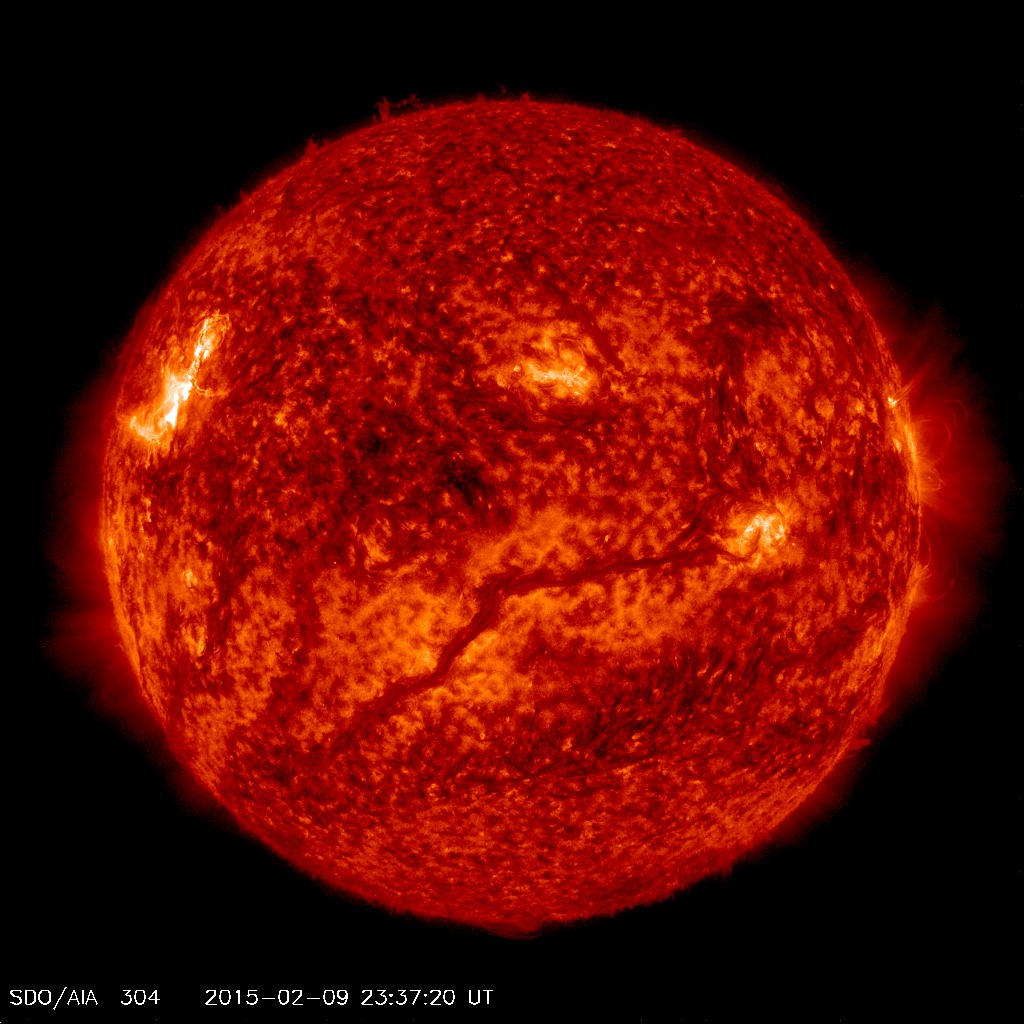
Space Weather Message Code: ALTTP2
Serial Number: 993
Issue Time: 2015 Feb 09 2358 UTC
ALERT: Type II Radio Emission
Begin Time: 2015 Feb 09 2323 UTC
Estimated Velocity: 1190 km/s
NOAA Space Weather Scale descriptions can be found at
www.swpc.noaa.gov/noaa-scales-explanation
Description: Type II emissions occur in association with eruptions on the sun and typically indicate a coronal mass ejection is associated with a flare event.
Space Weather Message Code: ALTTP4
Serial Number: 491
Issue Time: 2015 Feb 10 0033 UTC
ALERT: Type IV Radio Emission
Begin Time: 2015 Feb 09 2335 UTC
NOAA Space Weather Scale descriptions can be found at
www.swpc.noaa.gov/noaa-scales-explanation
Description: Type IV emissions occur in association with major eruptions on the sun and are typically associated with strong coronal mass ejections and solar radiation storms.

Sunspots
There are currently 4 numbered sunspot regions on the Earth side of the Sun.
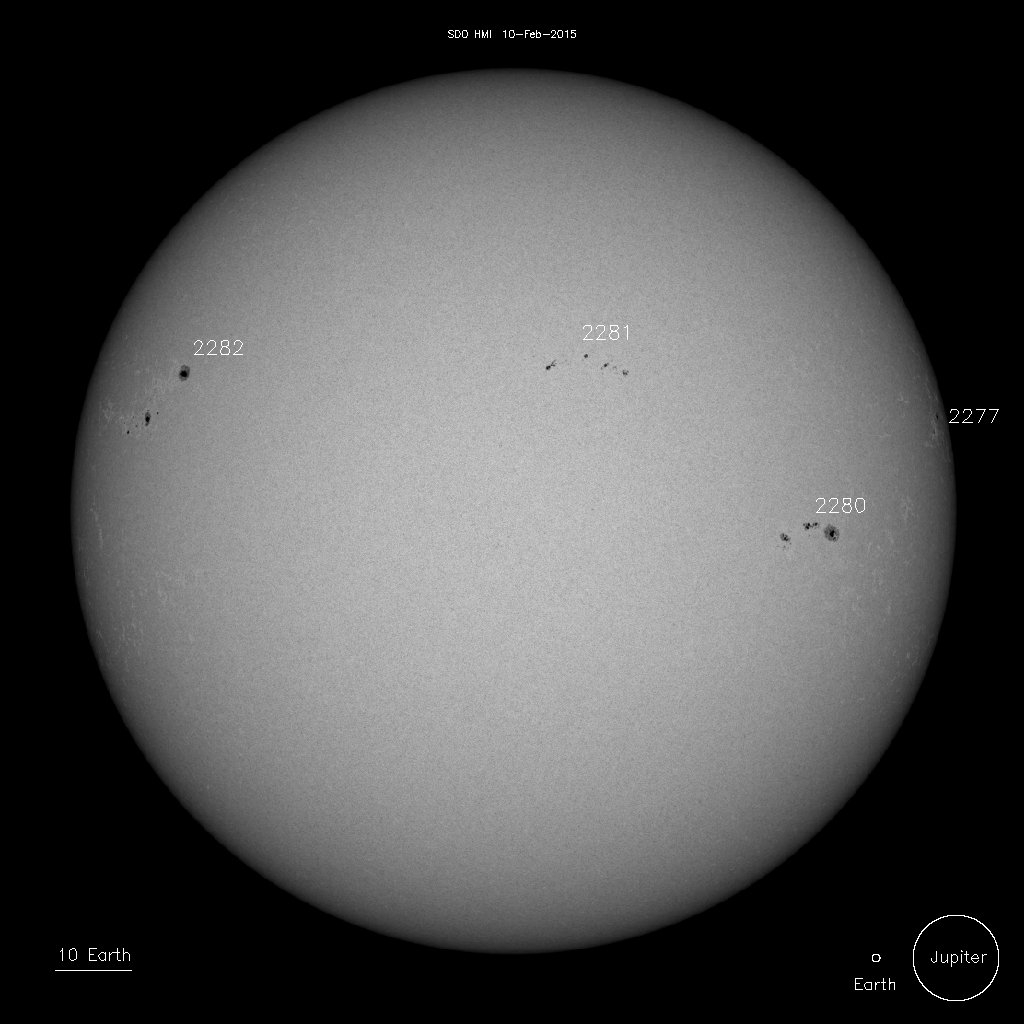

Sunspots on February 10, 2015. Image credit: NASA SDO/HMI
2277 – Beta
2280 – Beta-Gamma-Delta
2281 – Beta-Gamma
2282 – Beta
Solar activity is expected to continue at low levels with a chance for isolated M-class flares (R1-R2, Minor-Moderate) for the next three days (February 10 – 12).
Featured image: ESA/NASA LASCO C3

Commenting rules and guidelines
We value the thoughts and opinions of our readers and welcome healthy discussions on our website. In order to maintain a respectful and positive community, we ask that all commenters follow these rules.